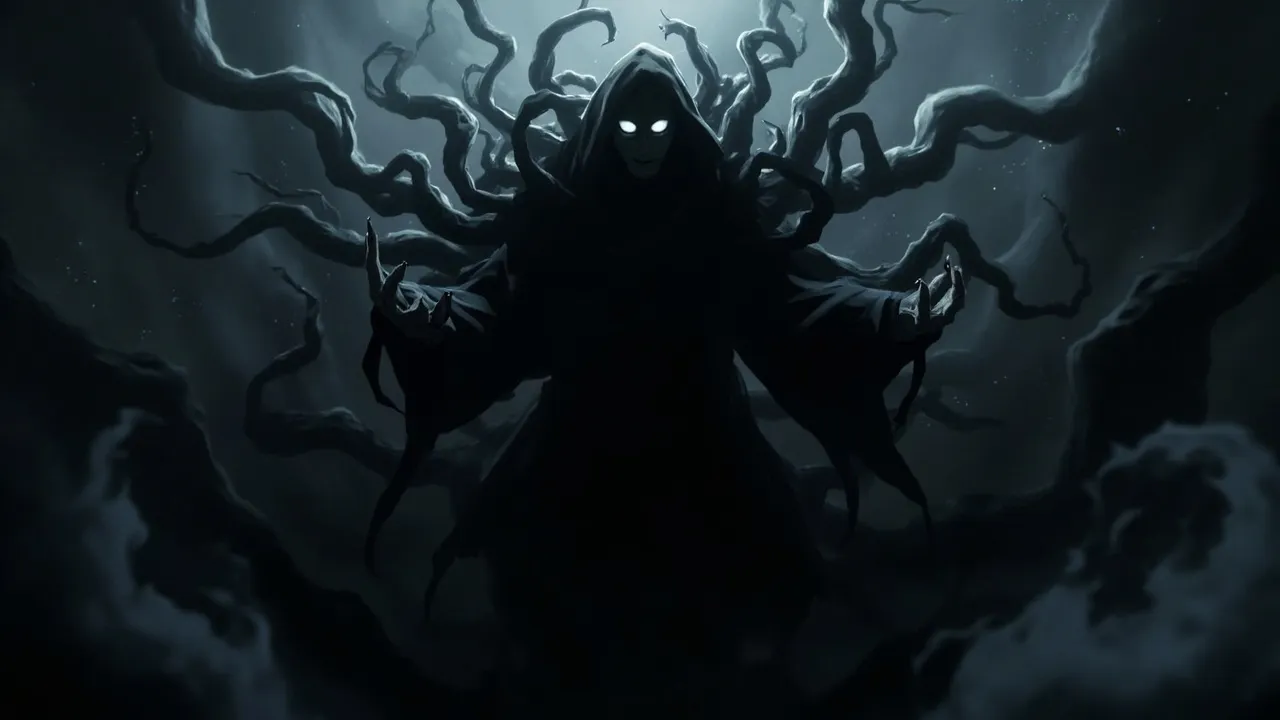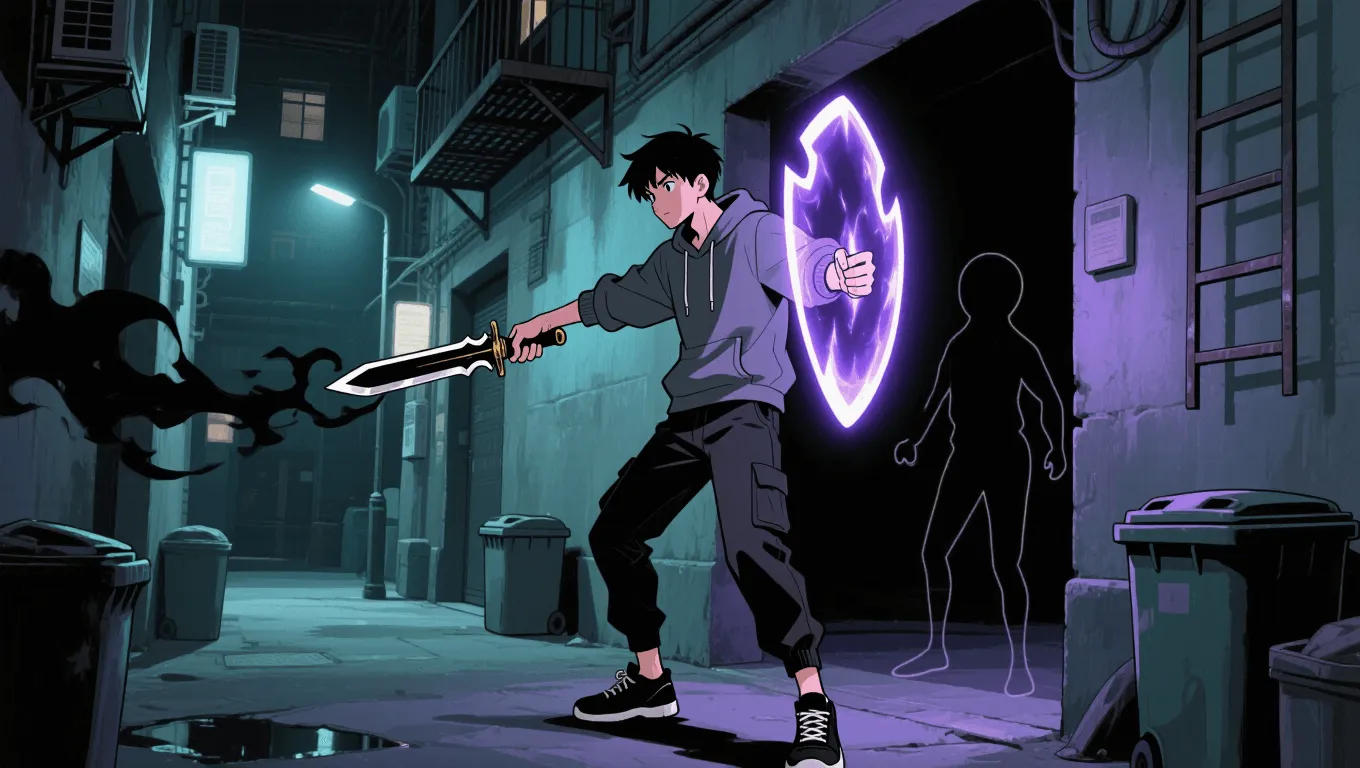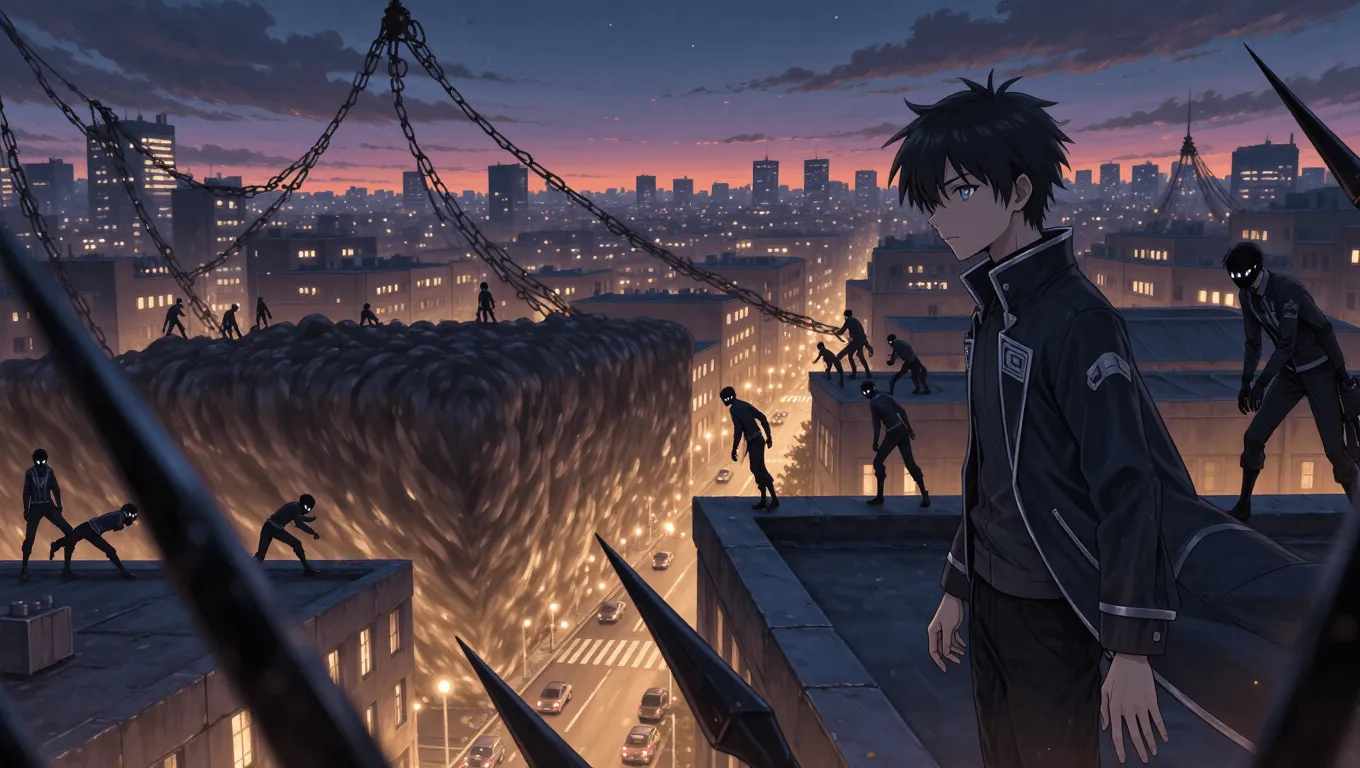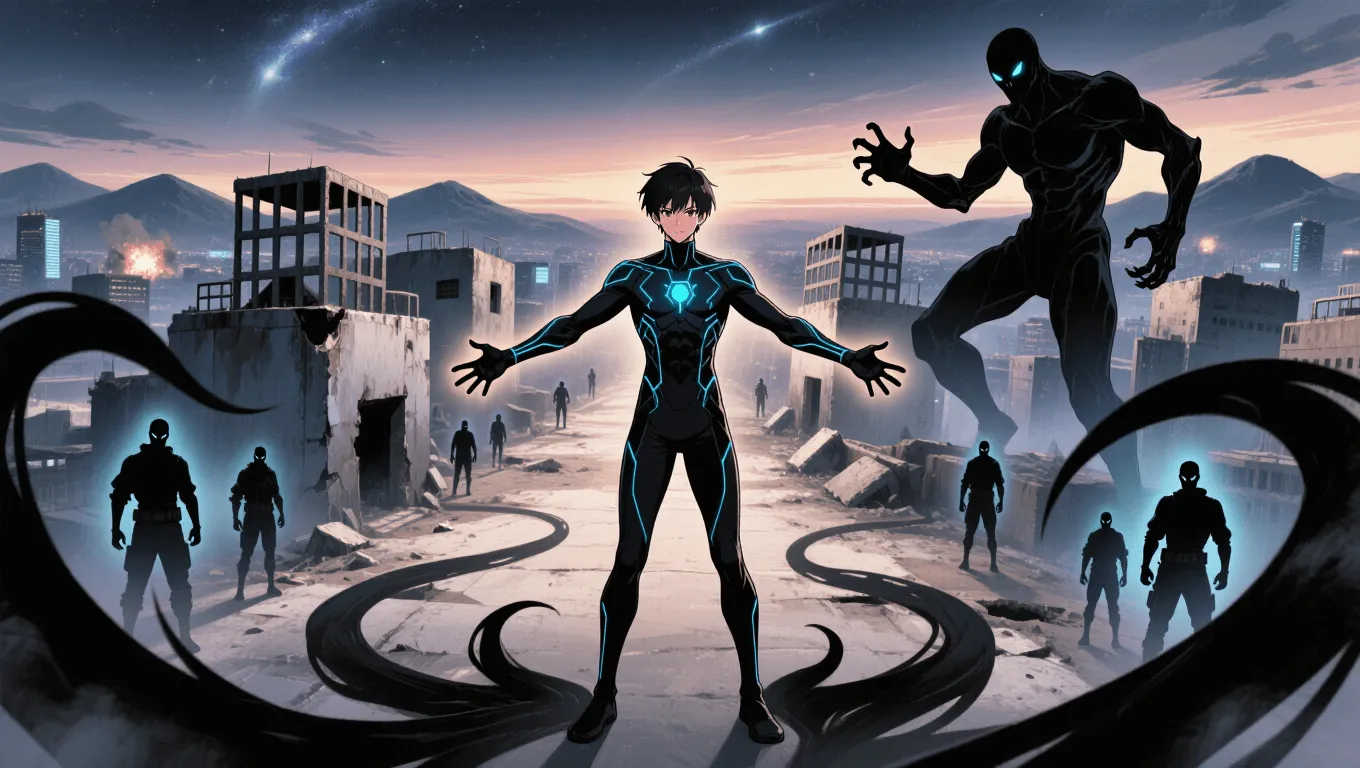Shadow Manipulation: Complete Power Guide to Umbrakinesis

Shadow Manipulation Video Demo 🎬
Table of Contents
- Shadow Manipulation Video Demo 🎬
- What Is Shadow Manipulation
- Core Abilities of Shadow Manipulation
- Application / Tactical Advantages in Combat
- Level: Level 1 🏙️, Level 2 🌇, Level 3 🌃
- Limitations of Using the Shadow Manipulation
- Weakness Against What Other Superpowers
- Synergistic Power Combos
- Known Users
Shadow manipulation is the power to control, shape, and weaponize darkness—often called umbrakinesis. Practitioners sculpt shadow into tangible tools, summon darkness domes to blind foes, step through connected gloom for rapid mobility, and deploy shadow clones for deception. Unlike simple hiding, shadow manipulation is active control over silhouettes and light contrast, enabling offense, defense, stealth, and battlefield control in one toolkit. For more abilities like this, browse the full list on the Superpower Wiki or spark ideas with the random superpower generator.
What Is Shadow Manipulation
Shadow manipulation is the controlled use of ambient darkness and cast shadows to produce physical or quasi-physical effects. Users “pull” shadow from surfaces, thicken it into matter-like forms, and reshape it into weapons, shields, tendrils, or structures. Because shadows are a function of light, effective use requires awareness of angles, intensity, and occlusion. In advanced portrayals, users travel between patches of darkness (shadow teleportation) or briefly merge with surfaces to become harder to detect.
Common alternate terms include umbrakinesis, darkness manipulation, and shadowcraft. Regardless of label, the core idea is treating darkness like a manipulable medium that can be focused, sculpted, and projected.
Core Abilities of Shadow Manipulation
Shadow Shaping and Constructs
Users extrude blades, spears, bucklers, barriers, grapnels, or platforms from nearby darkness. Construct durability depends on user skill, ambient shadow density, and concentration. Many practitioners “anchor” constructs to existing silhouettes for stability.
Darkness Domes and Field Dimming
By thickening ambient gloom, a user can lower visibility across a zone, disrupting targeting optics and line-of-sight tactics. Precision controllers can selectively spare allies while blinding opponents, creating asymmetric information advantage.
Shadow Binding and Grasping
Extending shadows into cords, manacles, or hands allows quick immobilization, disarm attempts, and trip lines. Hard-edged silhouettes—cast by strong, directional light—are ideal capture points for bindings.
Shadow Movement and Teleportation
Some users traverse connected shadows like doorways. Short “blink” hops flank targets; expert controllers move across buildings or districts at night, provided a continuous network of darkness exists.
Stealth, Camouflage, and Partial Intangibility
Merging with darkness reduces sound and visual signature. Masters can flatten into surface shadows or momentarily phase while within deep gloom, slipping through grates, cracks, or narrow gaps.
Sensory Extension via Shadow Net
By “listening” through the local web of shadows, a user senses motion and disturbances—an early-warning field particularly potent indoors where silhouettes overlap.
Shadow Clones and Decoys
Illusory or semi-solid duplicates misdirect enemies, draw fire, or execute simple actions. Clones typically disintegrate into smoke-like shade when struck, revealing the deception.
Application / Tactical Advantages in Combat
Lane Control and Zone Denial
Darkness funnels opponents into predictable routes. Shadow walls, spikes, and trenches reshape the engagement space, forcing unfavorable angles while shielding allies from incoming fire.
Ambush and Counterplay
Gloom favors first strikes. A user can hide a binding filament along a corridor seam, yank a target into cover, and follow with a spear from a ceiling shadow—turning line-of-sight fights into close-quarters takedowns.
Mobility and Extraction
Shadow steps bypass chokepoints and surveillance. Teams use the manipulator as a mobile evac point, ducking into darkness to reappear behind friendly lines or on high ground.
Anti-Surveillance Advantage
Cameras and optical targeting degrade in low light, while a darkness dome defeats many laser designators. Even when opponents switch to non-visual sensors, the user can combine bindings and terrain control to stay ahead.
Team Utility and Support
Shadow screens act as pop-up cover during reloads or medevac. Grapnels and ramps made of shade enable rapid elevation changes. Selective dimming masks retreat paths without blinding teammates.
Level: Level 1 🏙️, Level 2 🌇, Level 3 🌃
Level 1 🏙️: Street-Level Adept

-
Dim small rooms or alleys; create simple daggers, bucklers, and short tendrils.
-
Brief stealth by hugging deep shadow; basic sensory “pings” in adjacent gloom.
-
Short-range bindings anchored to obvious silhouettes.
-
Typical limitations: fragile constructs, narrow area control, and high focus drain.
Level 2 🌇: City-Scale Controller

-
Sustain multiple mid-durability constructs (barriers, spears, grapnels) and moving darkness domes.
-
Shadow steps across connected gloom within a campus or city block.
-
Functional shadow clones; reliable sensory net across rooms and corridors.
-
Better selectivity: grants allies clearer sightlines while degrading enemy vision.
Level 3 🌃: Master of the Night

-
Complex structures (cages, bridges, golems) with significant staying power.
-
Long-distance teleportation via continuous darkness; quick strategic redeploys after sunset.
-
Brief intangibility inside deep shadow; refined “shadow space” interaction for storage or concealment.
-
Macro-control: collapse entire zones into controlled night with layered traps and misdirection.
Limitations of Using the Shadow Manipulation
Light Dependence and Contrast
Shadows require contrast. Floodlit arenas, overcast glare with minimal occlusion, or diffuse white rooms flatten silhouettes, weakening control. Midday deserts and sterile labs are notoriously poor environments unless the user can generate darkness internally.
Stamina and Concentration Costs
Maintaining many constructs, a wide gloom field, or long-distance steps drains focus. Pain, disorientation, or sensory overload causes flicker or collapse—especially during multi-target bindings.
Environmental Geometry
Angles, surfaces, and obstacles shape available shadow. Busy interiors with varied lighting are advantageous; open plains with uniform illumination are not. Rain, smoke, or reflective surfaces can scatter or distort silhouettes.
Sensor Workarounds
Thermal imaging, echolocation, radar, and motion detectors bypass darkness. Without supplementary control—bindings, terrain denial, or silence fields—stealth alone may fail against multispectral detection.
Friendly-Fire and Morale Risks
Indiscriminate darkness confuses allies, disrupts coordination, and increases collision risk. Clear comms, prearranged routes, and selective dimming mitigate team stress.
Weakness Against What Other Superpowers
Photokinesis (Light Manipulation)
Direct light control dissolves constructs, flattens silhouettes, and backlights the user. Skilled photokinetics can “erase” shadow anchors and pierce darkness domes.
Solar or Radiant Projection
Broad-spectrum illumination and radiant auras wash out shadow density, undermining bindings and decoys while exposing positions.
Fire Manipulation and Illumination Fields
Flames create chaotic, dancing light that fractures shadows into unstable patches. Continuous light fields remove crisp edges needed for precise shaping.
Sonics, Vibration, and Seismic Sensing
If stealth is central, sonic mapping or vibration sense reveals movement in darkness. Shockwaves also disrupt concentration, forcing construct failure at critical moments.
Gravity Control or High-End Telekinesis
Raw force can tear through shadow walls and cages regardless of visibility, turning matchups into stamina contests the manipulator may lose.
Synergistic Power Combos
Precision Lighting Ally
Pairing with a light controller seems counterintuitive but is extremely potent. By placing sharp spotlights at planned angles, the team “draws” long, predictable shadows the manipulator can harden into ramps, snares, or grapnels on command.
Silence Fields and Sound Dampening
When darkness is combined with quiet, opponents lose both vision and auditory cues. Ideal for infiltration, hostage rescue, and surgical strikes.
Illusion, Fear, and Mind Games
Illusions layered over gloom multiply confusion; shadow clones feel real, distances warp, and enemies miscount attackers. Fear induction amplifies crowd control without expending extra shadow mass.
Portals and Spatial Folding
Shadow steps chained with short-range portals create non-linear routes that defy pursuit. Enter a wall seam, exit a portal behind enemy lines, then seal exits with a darkness cage.
Shadow-Linked Arsenal
Bonding weapons to shadow enables on-demand retrieval from any nearby darkness, mid-swing blade reshaping, and instant shielding—excellent for adaptive melee specialists.
Known Users
Shadow manipulation appears across comics, games, and anime, often emphasizing stealth, control, and mobility. A classic example is Cloak (Tyrone Johnson) from Marvel Comics, a darkness teleporter who wields a pocket of darkforce dimension for containment and rapid movement—see the character profile on the Marvel Database. Other fictional tacticians use extended silhouettes for bindings, decoys to exhaust opponents, and citywide gloom to defeat surveillance grids.
For deeper dives into related abilities and counterpicks, visit the full Superpower Wiki or experiment with pairings using the random superpower generator.
